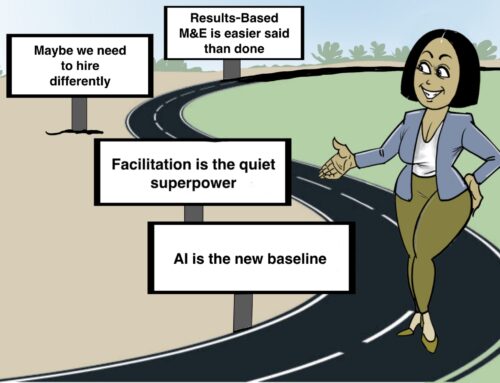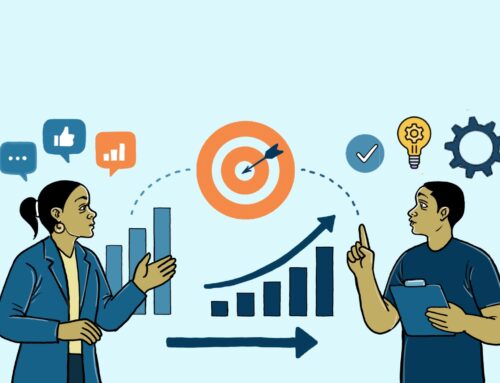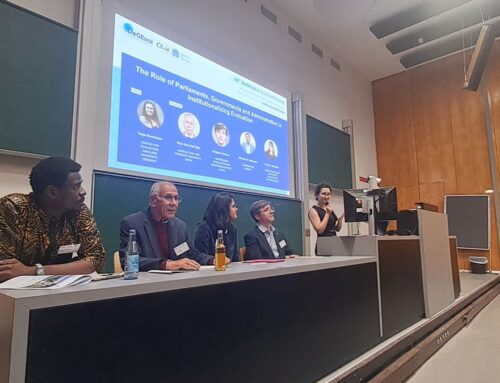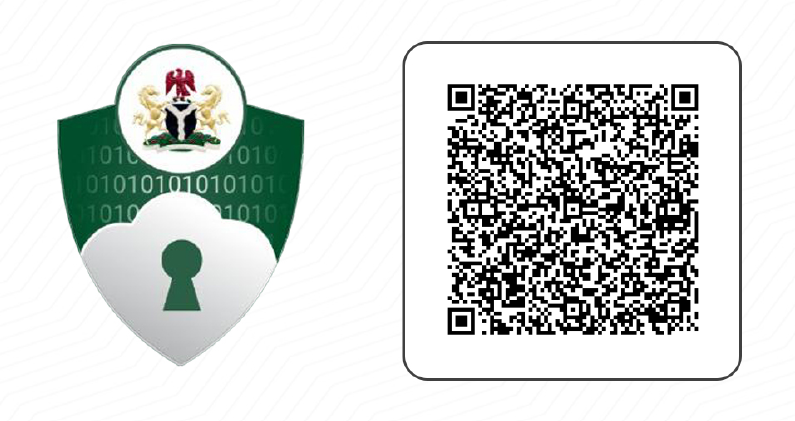Let’s do a quick mind exercise. Imagine this: A small community health project in Northern Nigeria just wrapped up after six months with remarkable results; maternal deaths dropped by nearly 40%. The Monitoring and Evaluation (M&E) team was thrilled. They compiled graphs, charts, and pages of analysis, convinced the numbers would speak for themselves.
But during the presentation to local leaders, the room fell silent. Faces looked blank. Nobody truly understood what had changed, or why it mattered.
As a Communications Officer working in a Monitoring, Evaluation, and Learning (MEL) organization, this scenario often plays in my head. It’s a reminder that data doesn’t speak unless we help it find a voice.
The MEL team can get caught up in the process, gathering data, writing reports, ticking indicators, and somewhere between the spreadsheets and PowerPoints, the heart of the story gets lost. Communicating impact isn’t about pushing out information; it’s about helping people see the change, feel the progress, and connect with the lessons.
The Communication Gap: When Data Doesn’t Speak
Let’s be honest, Evaluators, we have all been here. You spend weeks perfecting a report, cross-checking every figure, ensuring your findings are airtight. Then you send it off… and silence. No response. No feedback. No visible action.
That’s the communication gap I’m talking about. Our insights don’t always travel the way we intend them to. Sometimes it’s the technical language. Sometimes it’s the format. And sometimes, our audience simply doesn’t connect with data the same way we do.
That’s where communication becomes the bridge, the eye-opener that connects the people behind the numbers with those who need to act on them.
When communication fails, it doesn’t just make your work invisible; it makes it less useful because data that isn’t understood can’t drive change.
Barriers That Block the Message
Over time, and through my experience in a MEL-focused organization, I have seen a few barriers that stand between data and understanding:
Know Your Audience: Communicate findings in a way that fits their world. Policymakers need key messages; communities need relatable stories.
The Language Trap: We love our M&E terms, indicators, logframes, baselines, but outside the M&E bubble, these can alienate people. The moment we speak in jargon, we lose our audience.
Too Much Information, Too Little Meaning: Flooding people with long reports and endless tables doesn’t prove thoroughness; it buries meaning. Simplify with visuals, infographics, and short summaries.
One-Way Reporting: Communication often flows upward, but not back to the communities that provided the data. Without feedback loops, trust and learning are lost.
No Story, Just Stats: Numbers alone don’t move people. Data becomes memorable when paired with human stories.
Weak Feedback Culture: Communication should be two-way, with a focus on listening, adapting, and learning. “The best communicators in M&E aren’t those who speak the loudest, but those who make the message easiest to grasp.” This is made possible through positive feedback turned into lessons.
Overcoming Communication Barriers
The good news? These barriers are not fixed; they can be overcome with empathy and intentionality.
- Know Your Audience: Ask: Who am I speaking to, and what do they care about? Tailor your message to their priorities.
- Simplify Without Losing Depth: Clarity doesn’t mean watering down; it means connecting complex findings to real experiences. “Women now access healthcare services twice as often,” says more than “service utilization increased by 100%.”
- Use Visuals and Stories: Sometimes a single image or story communicates more than 10 pages of text. At Cloneshouse, our #EvalBlues series, a comic strip of evaluators’ real-life experiences, perfectly captures this balance between humor, reflection, and learning.
- Encourage Feedback: Create spaces where partners, communities, and stakeholders can respond and engage. Communication is most powerful when it’s a dialogue, not a broadcast.
Best Practices for Communicating Impact
In my work as a Communications Officer within a MEL organization, a few practices have proven effective:
- Tell Stories with Data: Start reports or presentations with a human story tied to your findings.
- Be Consistent: Don’t wait for end-of-project reports; share progress updates along the way.
- Keep Visuals Simple: Infographics, dashboards, and maps make information clear and engaging. My boss always says, “Reduce wordiness, make your message clear, simple, and attractive to the eyes.”
- Collaborate Across Teams: Communication isn’t the job of the M&E team alone. Work hand-in-hand with the communications team, program, and field teams to craft messages that resonate.
At its core, communication in M&E is about connection, translating evidence into meaning, and meaning into action.
From Numbers to Narratives
Let’s return to that community health project. What if the M&E team had said instead:
“Six months ago, 10 mothers lost their lives giving birth. Today, only six did. Four mothers are alive because of the care now available, and that’s progress worth celebrating.”
That’s still data, but now it’s human, felt, and remembered.
Because impact isn’t just something we measure, it’s something we communicate. And until we learn to tell those stories well, even our best data will never reach its full potential.
So, the next time you’re preparing a report or presentation, pause for a moment and ask yourself:
Am I just reporting data, or am I communicating impact?
About the Author
Happiness Titus Zirra is a Communications Officer at Cloneshouse, currently pursuing a Postgraduate Diploma in Mass Communication, and is a certified PMD Pro professional. A passionate Girl-Child Advocate and #FundPad Campaigner, Happiness brings her background as a Linguist into the world of development communication, bridging the gap between data and storytelling in Monitoring, Evaluation, and Learning (MEL). She crafts messages that inspire action, foster learning, and amplify impact. When she’s not shaping stories or strategies, you’ll likely find her lost in the pages of a good book.





